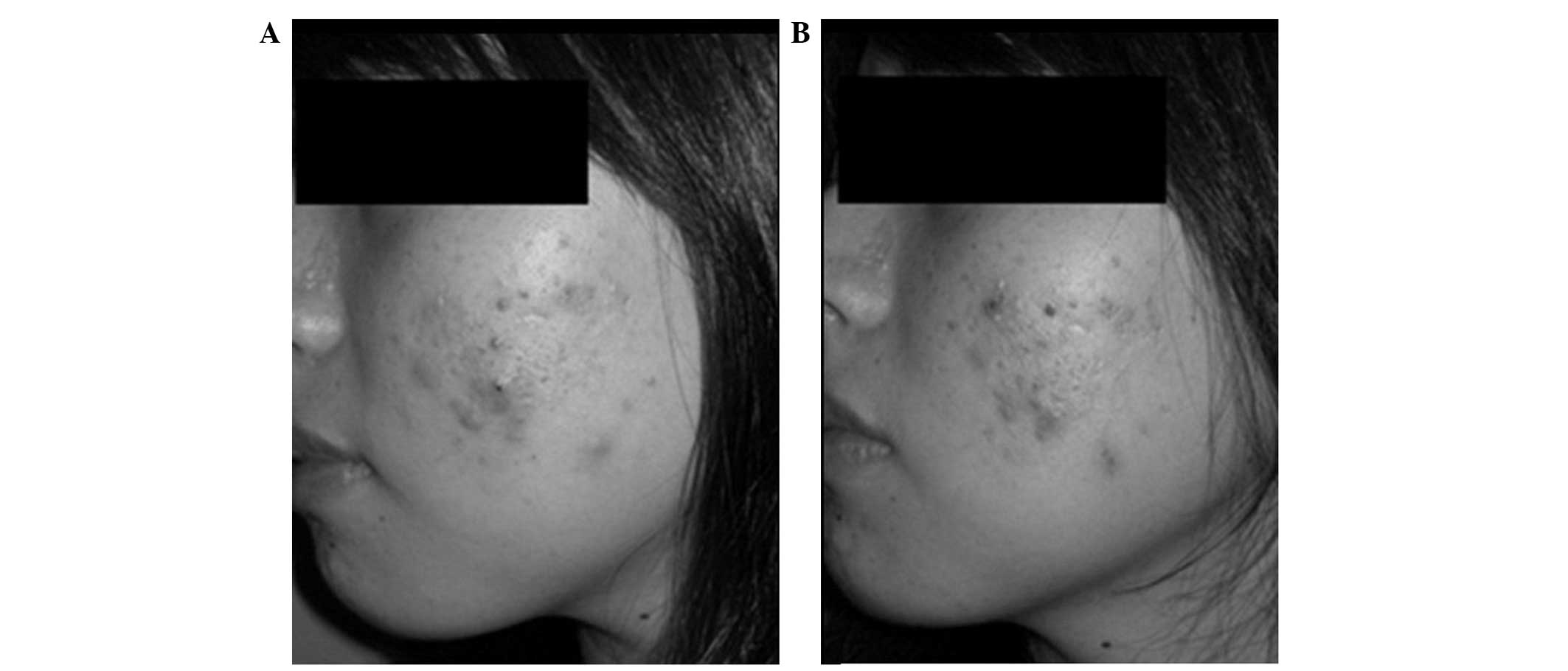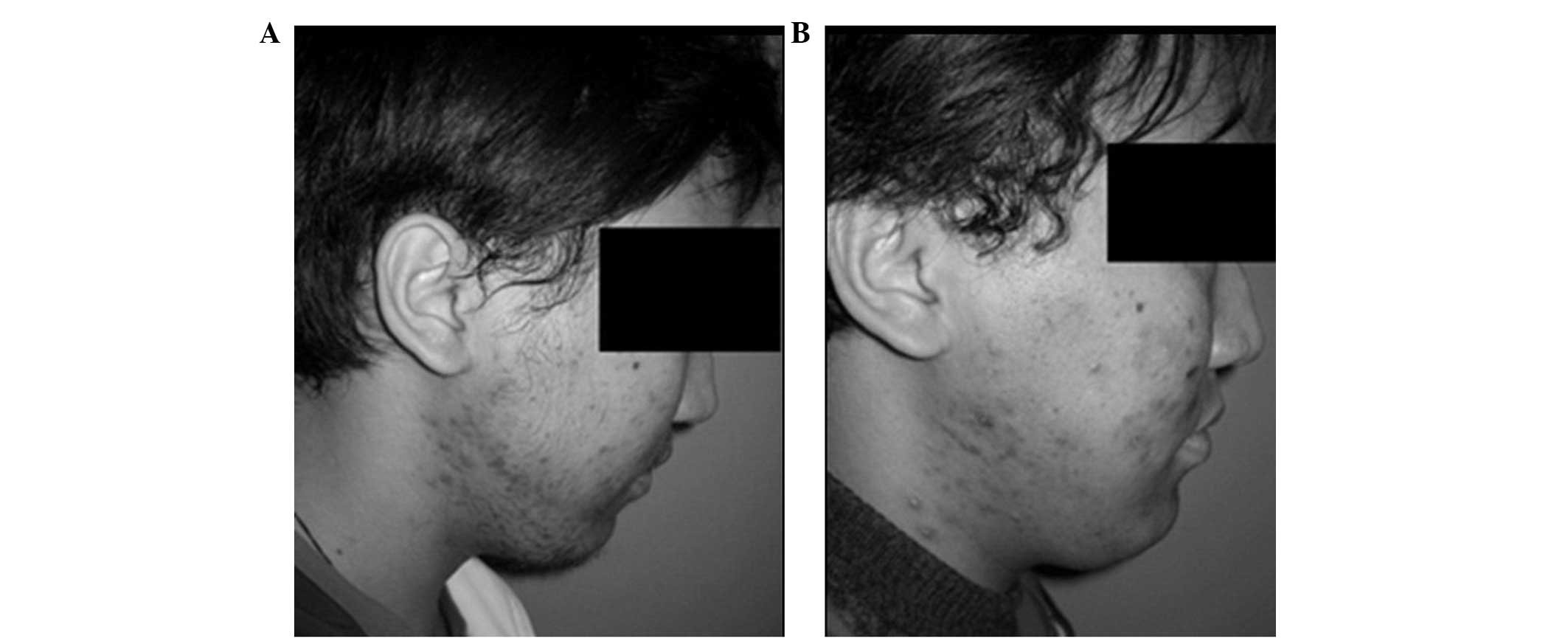|
1
|
Song WF, Liu Z, Lin SJ, et al:
Photodynamic therapy in acne with 5-aminolevulinic acid: Analysis
of clinical effect. Zhong Guo Ji Guang Yi Xue Za Zhi. 19:223–226.
2010.
|
|
2
|
Ozolins M, Eady EA, Avery A, Cunliffe WJ,
O'Neill C, Simpson NB and Williams HC: Randomized controlled
multiple treatment comparison to provide a cost-effectiveness
rationale for the selection of antimicrobial therapy in acne.
Health Technol Assess. 9:iii–212. 2005.PubMed/NCBI
|
|
3
|
Gold MH: Efficacy of lasers and PDT for
the treatment of acne vulgaris. Skin Therapy Lett. 12(1–6):
92007.
|
|
4
|
Rai R and Natarajan K: Laser and light
based treatments of acne. Indian J Dermatol Venereol Leprol.
79:300–309. 2013. View Article : Google Scholar : PubMed/NCBI
|
|
5
|
Elman M, Slatkine M and Harth Y: The
effective treatment of acne vulgaris by a high-intensity, narrow
band 405–420 nm light source. J Cosmet Laser Ther. 5:111–117. 2003.
View Article : Google Scholar : PubMed/NCBI
|
|
6
|
Nestor MS, Gold MH, Kauvar AN, et al: The
use of photodynamic therapy in dermatology: Results of a consensus
conference. J Drugs Dermatol. 5:140–154. 2006.PubMed/NCBI
|
|
7
|
Klein A, Babilas P, Karrer S, Landthaler M
and Szeimies RM: Photodynamic therapy in dermatology - an update
2008. J Dtsch Dermatol Ges. 6:839–846. 2008. View Article : Google Scholar : PubMed/NCBI
|
|
8
|
Tzung TY, Wu KH and Huang ML: Blue light
phototherapy in the treatment of acne. Photodermatol Photoimmunol
Photomed. 20:266–269. 2004. View Article : Google Scholar : PubMed/NCBI
|
|
9
|
Lee Y and Baron ED: Photodynamic therapy:
Current evidence and applications in dermatology. Semin Cutan Med
Surg. 30:199–209. 2011. View Article : Google Scholar : PubMed/NCBI
|
|
10
|
Harris F and Pierpoint L: Photodynamic
therapy based on 5-aminolevulinic acid and its use as an
antimicrobial agent. Med Res Rev. 32:1292–1327. 2012. View Article : Google Scholar : PubMed/NCBI
|
|
11
|
Mariwalla K and Rohrer TE: Use of laser
and light-based therapies for treatment of acne vulgaris. Lasers
Surg Med. 37:333–342. 2005. View Article : Google Scholar : PubMed/NCBI
|
|
12
|
Kosaka S, Miyoshi N, Akilov OE, Hasan T
and Kawana S: Targeting of sebaceous glands by δ-aminolevulinic
acid-based photodynamic therapy: An in vivo study. Lasers
Surg Med. 43:376–381. 2011. View Article : Google Scholar : PubMed/NCBI
|
|
13
|
Kostović K, Pastar Z, Ceović R, Mokos ZB,
Buzina DS and Stanimirović A: Photodynamic therapy in dermatology:
Current treatments and implications. Coll Antropol. 36:1477–1481.
2012.PubMed/NCBI
|
|
14
|
Haedersdal M, Togsverd-Bo K and Wulf HC:
Evidence-based review of lasers, light sources and photodynamic
therapy in the treatment of acne vulgaris. J Eur Acad Dermatol
Venereol. 22:267–278. 2008. View Article : Google Scholar : PubMed/NCBI
|
|
15
|
Shaaban D, Abdel-Samad Z and El-Khalawany
M: Photodynamic therapy with intralesional 5-aminolevulinic acid
and intense pulsed light versus intense pulsed light alone in the
treatment of acne vulgaris: A comparative study. Dermatol Ther.
25:86–91. 2012. View Article : Google Scholar : PubMed/NCBI
|
|
16
|
Hongcharu W, Taylor CR, Chang Y, Aghassi
D, Suthamjariya K and Anderson RR: Topical ALA-photodynamic therapy
for the treatment of acne vulgaris. J Invest Dermatol. 115:183–192.
2000. View Article : Google Scholar : PubMed/NCBI
|
|
17
|
Oh SH, Ryu DJ, Han EC, Lee KH and Lee JH:
A comparative study of topical 5-aminolevulinic acid incubation
times in photodynamic therapy with intense pulsed light for the
treatment of inflammatory acne. Dermatol Surg. 35:1918–1926. 2009.
View Article : Google Scholar : PubMed/NCBI
|
|
18
|
Wang XL, Wang HW, Zhang LL, Guo MX and
Huang Z: Topical ALA PDT for the treatment of severe acne vulgaris.
Photodiagnosis Photodyn Ther. 7:33–38. 2010. View Article : Google Scholar : PubMed/NCBI
|
|
19
|
Yin R, Hao F, Deng J, Yang XC and Yan H:
Investigation of optimal aminolaevulinic acid concentration applied
in topical aminolaevulinic acid-photodynamic therapy for treatment
of moderate to severe acne: A pilot study in Chinese subjects. Br J
Dermatol. 163:1064–1071. 2010. View Article : Google Scholar : PubMed/NCBI
|
|
20
|
Serrano G, Lorente M, Reyes M, et al:
Photodynamic therapy with low-strength ALA, repeated applications
and short contact periods (40–60 min) in acne, photoaging and
vitiligo. J Drugs Dermatol. 8:562–568. 2009.PubMed/NCBI
|
|
21
|
Bissonnette R: Treatment of acne with
photodynamic therapy. G Ital Dermatol Venereol. 146:445–456.
2011.PubMed/NCBI
|
|
22
|
Mei X, Shi W and Piao Y: Effectiveness of
photodynamic therapy with topical 5-aminolevulinic acid and intense
pulsed light in Chinese acne vulgaris patients. Photodermatol
Photoimmunol Photomed. 29:90–96. 2013. View Article : Google Scholar : PubMed/NCBI
|
|
23
|
Sakamoto FH, Torezan L and Anderson RR:
Photodynamic therapy for acne vulgaris: A critical review from
basics to clinical practice: part II. Understanding parameters for
acne treatment with photodynamic therapy. J Am Acad Dermatol.
63:195–211. 2010. View Article : Google Scholar : PubMed/NCBI
|
















